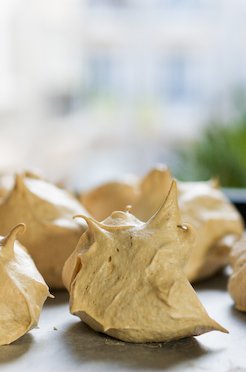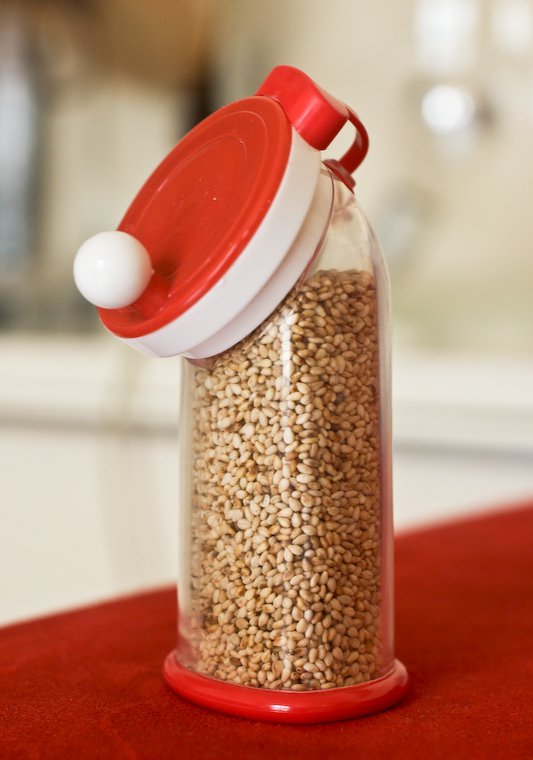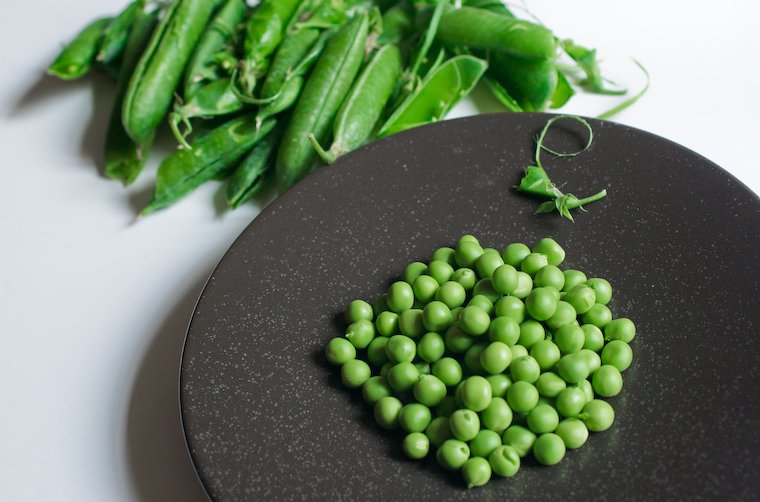
My freezer is not exactly in its prime, and it suffers from ice buildup syndrome.
I put stuff in there, all wrapped up and all, and a few weeks later everything’s covered in frost like the beard of a North Pole explorer. And after a while, there’s so much ice covering the shelves that I half expect to see penguins skating around.
Part of my job, as this freezer’s caregiver, is to defrost it regularly — i.e. use up everything that’s inside, turn it off, let the temperature rise, detach entire ice caps (that’s the fun part, not unlike loosening one’s milk teeth), clean the whole thing, and start afresh.
The use up everything that’s inside step is, of course, the one that takes the longest. It can take weeks, especially since I’m a bit of a squirrel (I’ve always thought squirrels must have freezers in their tree trunk caches, but I may be wrong).
My latest empty-the-freezer campaign turned up a small tub containing two egg whites, leftover from recent batches of squeeze cookies, for which only the yolks are needed.
Leftover egg whites usually mean rochers à la noix de coco, langues de chat, or tuiles in my kitchen, but this time, a violent desire to make meringues took hold of me. This was to be my first time*. I was excited.
At the risk of sounding completely irrational, I must note that I’ve never been much of a meringue fan. When my sister and I were young girls and we dropped by the bakery to buy ourselves a goûter (an afternoon snack), she sometimes chose one of those big, pale pink, swirly meringues; I could never understand what was so appealing about a large, dry lump of sugar styrofoam that left dandruff down the front of your shirt. (Me, I was partial to the CD-sized, chocolate-coated sablés.)
So, what caused my change of heart on that particular day? Well, I had just read an excellent how-to article in the copy of Delicious. I’d brought back from Australia, and it had convinced me that, contrary to my prior belief, French meringue** was totally within my reach.
Two things remain from my old thoughts on meringue, however: 1-, I am only interested it if it has a mallowy heart — that little lump of chewy, sticky, your-dentist-is-going-to-love-this cooked sugar. And 2-, I want flavor. The first concern is adressed by well-timed baking and proper cooling; the second, by the use of a quality flavoring agent or, in my case, a good unrefined cane sugar***, whose toffee flavors have been enhanced by the empty vanilla pod I placed in it weeks ago.
So, with that in mind, if you’re a meringue virgin — or a long-time abstinent –, I encourage you to give this recipe a try: summer is just around the corner, and you’re going to need meringues to garnish your cups of berries and ice cream, no? I myself am plotting all manner of flavor variations (using cocoa powder, flower syrups, or ground nuts) and sandwiching opportunities (think ganache or fruit preserves).
~~~
* I have a long history of shying away from any recipe that requires the whipping of egg whites. My beloved stand mixer is helping me on the path to recovery.
** Technically speaking, this style of baked meringue is refered to as French meringue, as opposed to Italian meringue (used in marshmallows in particular; it is made with cooked sugar and isn’t baked) or Swiss meringue (the egg whites and sugar are whisked over a pan of warm water then whisked until cool).
*** The sugar was light brown; this colored the batter and made the meringues lightly tan, too.
~~~
As a side note, if you have access to French magazines, perhaps you’ll be interested in purchasing the May/June issue of ELLE à table, which came out yesterday. The layout and structure of the magazine have been spruced up, and I have a new column in there now!
Continue reading »








